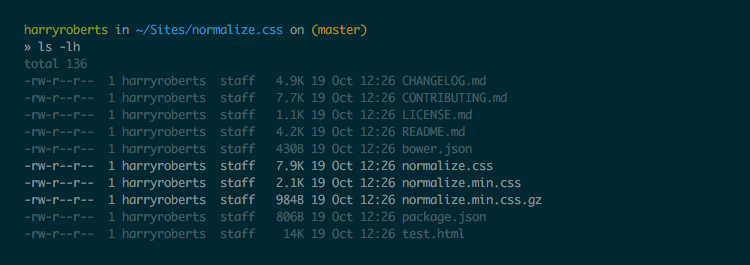By Harry Roberts
Harry Roberts is an independent consultant web performance engineer. He helps companies of all shapes and sizes find and fix site speed issues.
Written by Harry Roberts on CSS Wizardry.
Shaun Rashid’s 2015 article Normalize (CSS) No More has been making its way round the Twittersphere again recently, and it’s brought a few questions to my mind. This post isn’t a direct rebuttal or criticism of Shaun’s article, but rather my own take on things in the form of a response.
In Shaun’s article, the argument is made that normalising CSS (specifically via Normalize.css, but presumably the argument extends to anything of its ilk, like a more traditional reset) goes against the philosophy that websites do not need to look the same in every browser: a stance we fought very very hard to achieve. Whilst I absolutely agree that websites do not need to look the same in every browser—doing so is very time consuming, usually very frustrating, and seldom worth the time or effort—this argument is made on a false assumption: that Normalize.css exists to make websites look the same in every browser.
When we talk about making websites look the same in every browser, we’re
usually discussing the fact that it’s okay for round corners to be absent in
browsers that don’t support border-radius, or that we can live with subtle
layout shifts from one browser to another, or that we can progressively enhance
visual features where possible. This is something I agree with wholeheartedly.
When we talk about Normalize.css, we’re not talking about making websites look the same in every browser, we’re talking about providing a consistent and bug-free baseline. We’re talking about making a consistent baseline to make development easier. Normalize.css isn’t for our users or our clients, it’s for us as developers. We should always put the user first, but developer convenience is still a thing.
From Nicolas’ article in which he introduces Normalize.css:
Resets impose a homogeneous visual style by flattening the default styles for almost all elements. In contrast, [N]ormalize.css retains many useful default browser styles.
So please, do keep using Normalize.css. It makes your life easier, and with an absolute minimal overhead: v5.0.0 is a mere 984 bytes after gzip. For context, that represents less than 1.3% of the average CSS project.
Or, at the very least, try not to dismiss it based on an incorrect understanding.

Harry Roberts is an independent consultant web performance engineer. He helps companies of all shapes and sizes find and fix site speed issues.

Hi there, I’m Harry Roberts. I am an award-winning Consultant Web Performance Engineer, designer, developer, writer, and speaker from the UK. I write, Tweet, speak, and share code about measuring and improving site-speed. You should hire me.
You can now find me on Mastodon.


I am available for hire to consult, advise, and develop with passionate product teams across the globe.
I specialise in large, product-based projects where performance, scalability, and maintainability are paramount.